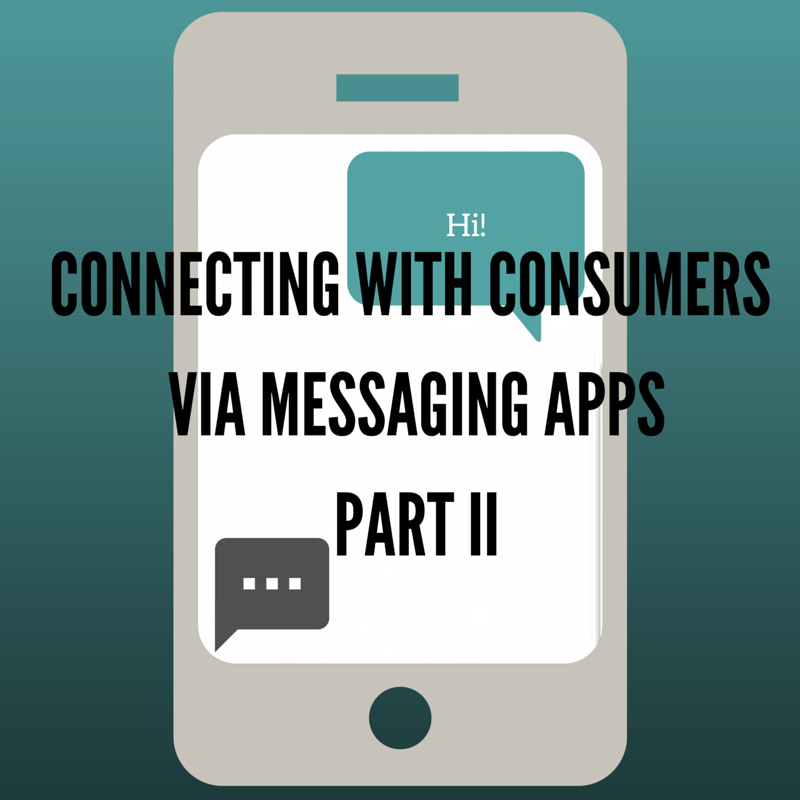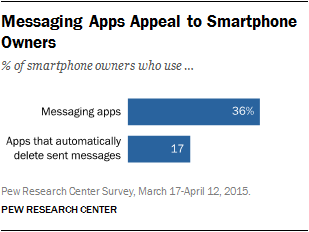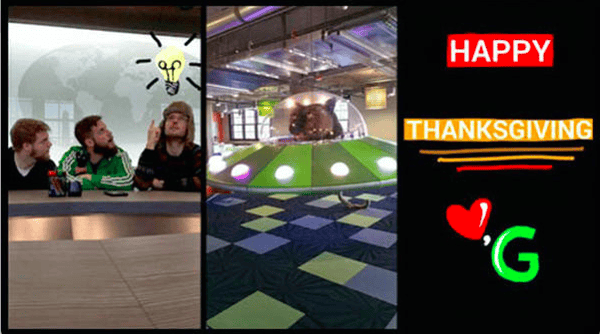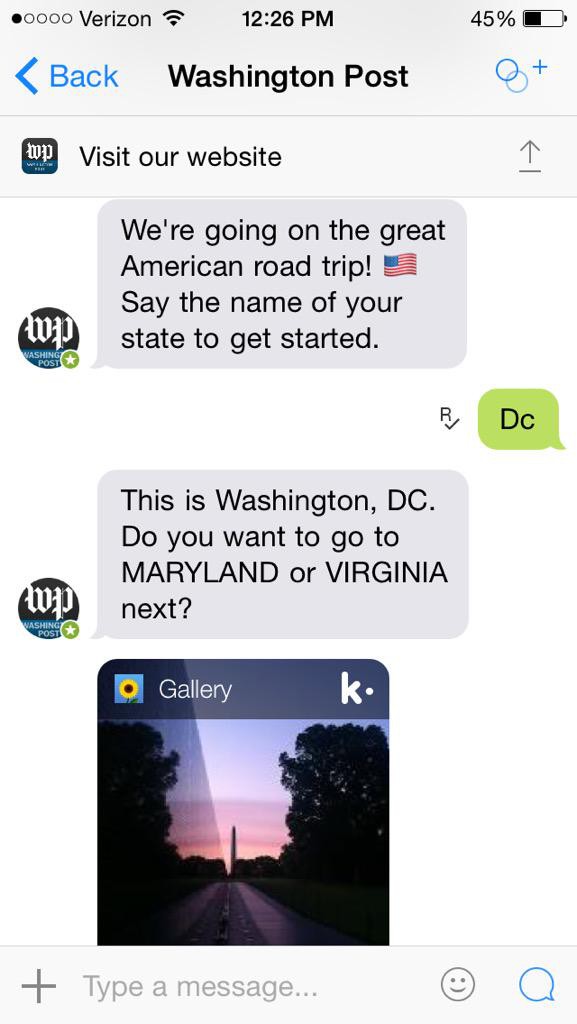Sixty Seconds for Social: What’s New with Messaging Apps

Posted By Mary Pavlu on August 28, 2015
Earlier this year, we took a deep dive into messaging: “Connecting With Consumers Via Messaging Apps.” A lot has happened since then, and the popularity of messaging apps like Snapchat, Line, Kik, WeChat and WhatsApp continues to rise, making brands more aware of the power of messaging. This blog post picks up where we left off and will help you quickly get up to speed on messaging’s new opportunities for marketers.
Why Brands Need to Be On Top of Messaging
We all know that young adults are popular users of messaging apps, and Pew Research’s recent Mobile Messaging and Social Media 2015 report states that among smartphone owners ages 18-29, a whopping 49% use messaging apps. But it’s not just teens that are populating these apps - 26% of adults online are also using messaging apps, and 36% of smartphone owners use messaging apps. Additionally, 17% of smartphone owners use apps like Snapchat or Wickr, both of which automatically delete sent messages.

A recent study by media agency MEC found that 79% of messaging app users were “likely” to connect with brands, presenting an incredible opportunity to connect with an enormous audience. This is especially true with millennials, since nearly half of 18-34 year old mobile messaging app users said that they are likely to engage with brands they are interested in via messaging apps.
Snapchat
Snapchat, the most popular of all messaging apps valued at $15 billion, has been taking the media by storm due to strong engagement from both users and brands. As of May 2015, Snapchat has 100 million daily active users and 8,796 photos are shared per day via the app. Snapchat’s popularity could be due to its constantly evolving features. For example, the messaging app just debuted paid political ads.

Snapchat boasts tons of brand engagement. A great example of this is Mashable, which has been doing an enviable job of gaining traction via the messaging app. Mashable is especially great at sharing its latest news, depicted daily via its Snapchat story. Its posts tend to have themes (such as Tech Tuesdays) that focus on its latest headlines. It also devotes an entire creative team to developing its stories, which explains why they’re always so eye-catching.
Kik
Messaging app Kik claims it is “the easiest, most beautiful way to send messages, pictures, videos and sketches.” The appeal of Kik is geared towards a younger demographic which uses the app to communicate via group chats. Kik has 200 million users, and 70% are between the ages of 13 and 25.
Kik is used through WiFi, so it doesn’t require users to enter their phone number or use a specific cell phone carrier, thus making it free -- something that holds huge appeal for their audience.In addition, with Kik, users must opt into conversations with brands and publishers. They cannot send any content to users unless the user initiated the conversation with the brand. Kik has 200 million users, and 70% are between the ages of 13 and 25.
There are 60 publishers and brands, including 16 Handles and Teva using the platform, and Kik says its opt-in nature has led to high user-engagement rates. Ten million of its 200 million users have opted in to communicate with those brands, with an average of 9.4 messages sent per conversation.
It may come as a surprise to some, but The Washington Post is one of the most successful brands using Kik. The media company uses the app to interact with readers via games and polls. Recently, it posted a game centered around “The Great American Roadtrip,” requesting that users simply say the name of their state to get started. The user's response triggered an automated conversation that included images of different cities around the U.S.

Yahoo! Live Text
Yahoo!’s new messaging app, Live Text, is setting itself apart from its competitors by providing text and video, but no audio. It aims to help users understand each other’s moods more clearly than from texting. Yahoo! Live Text just launched last week, but we think it’s safe to assume brands already plan to utilize the newest messaging platform.
Twitter Direct Messaging
Recent updates to Twitter’s direct messaging have hinted at a deeper interest in entering the space. The removal of a 140 character limit and introduction of desktop notifications for direct messaging both appear to be steps towards competing with messaging apps like Facebook Messenger and Snapchat.
Final Thoughts
Messaging apps are a win-win for both users and brands. Users have access to a variety of features ranging from calling, texting and gaming, and brands have the opportunity to connect with users in endless ways. Thomas Husson, Forrester’s principal analyst of marketing and strategy, summed up the direction messaging apps are headed this way:
“Messaging apps are morphing into marketing and e-commerce platforms. For brands, it won’t necessarily be about ads, but about mixing content and context in a relevant way.”
Want to learn more? Check out these other great messaging app resources:
- Red Eye Chicago: 5 Brands to Follow On Snapchat
- Digiday: 5 Things Brands Need to Know About Messaging Apps
- TechCrunch: Yahoo Unveils Its Audio-Free Video Messaging App, Livetext
- Expanded Ramblings: 60 Amazing Snapchat Statistics
- The Next Web: Twitter Is Rolling Out Desktop Notifications For Direct Messages
- Pew Research Center: Mobile Messaging and Social Media 2015


